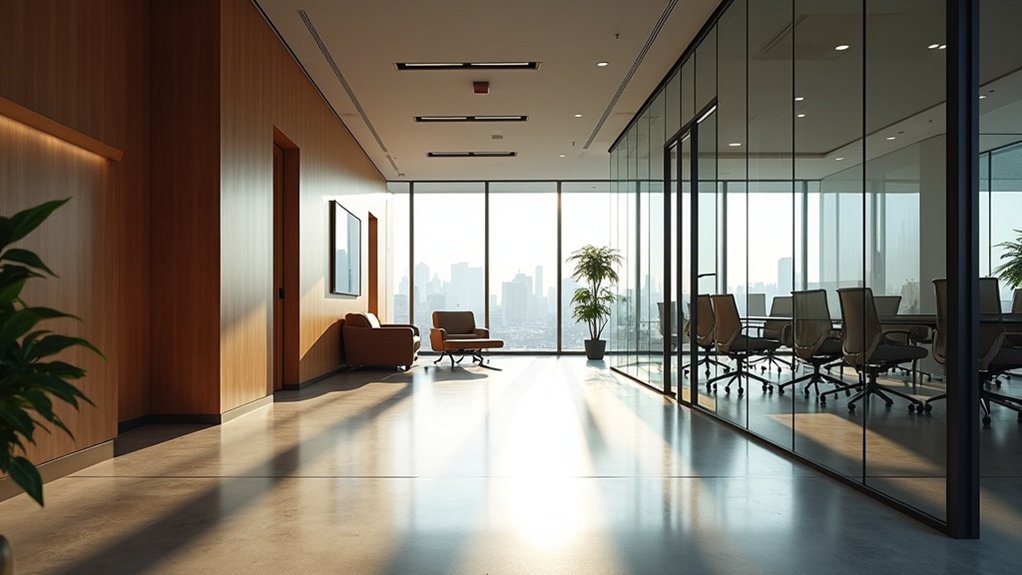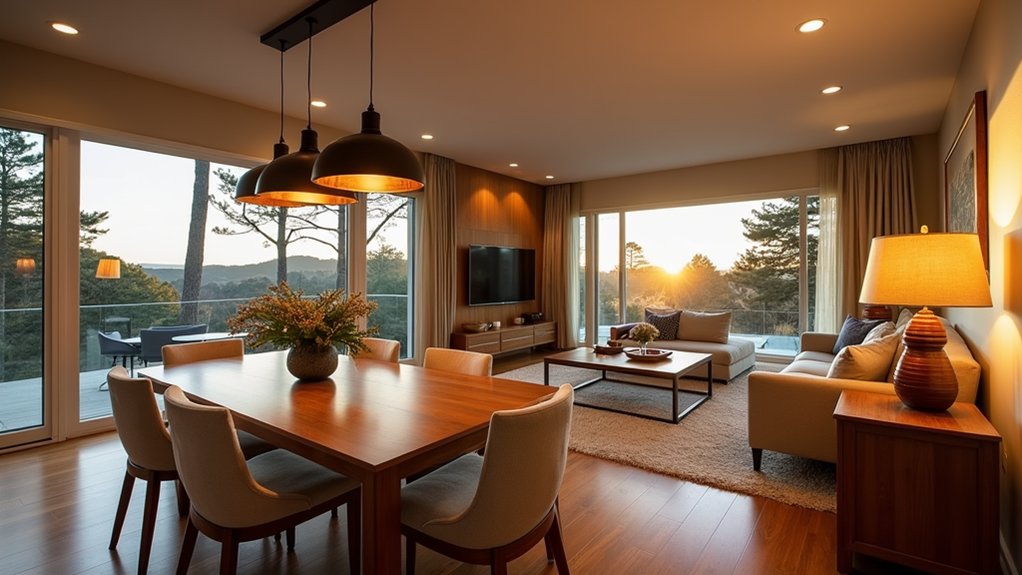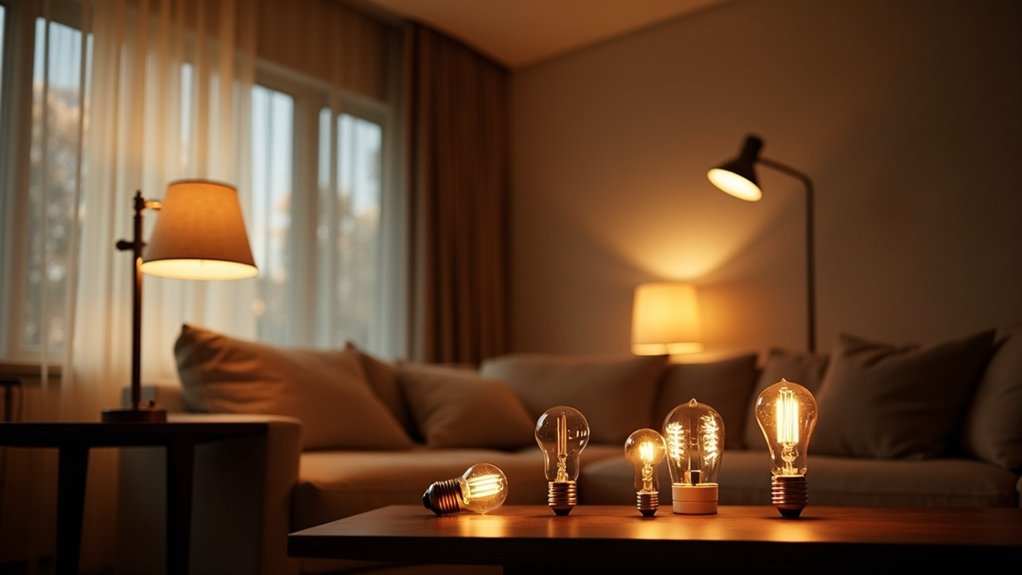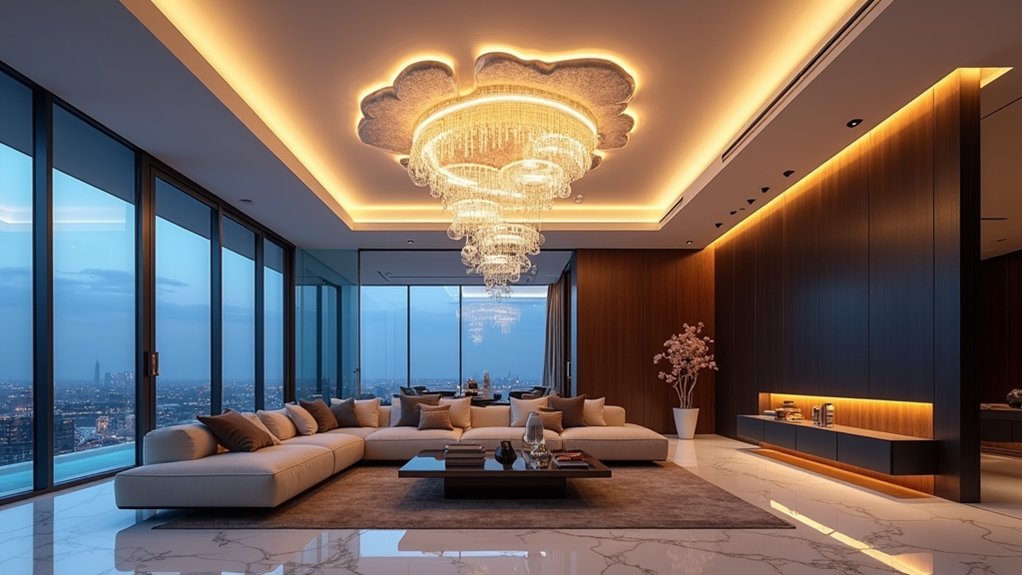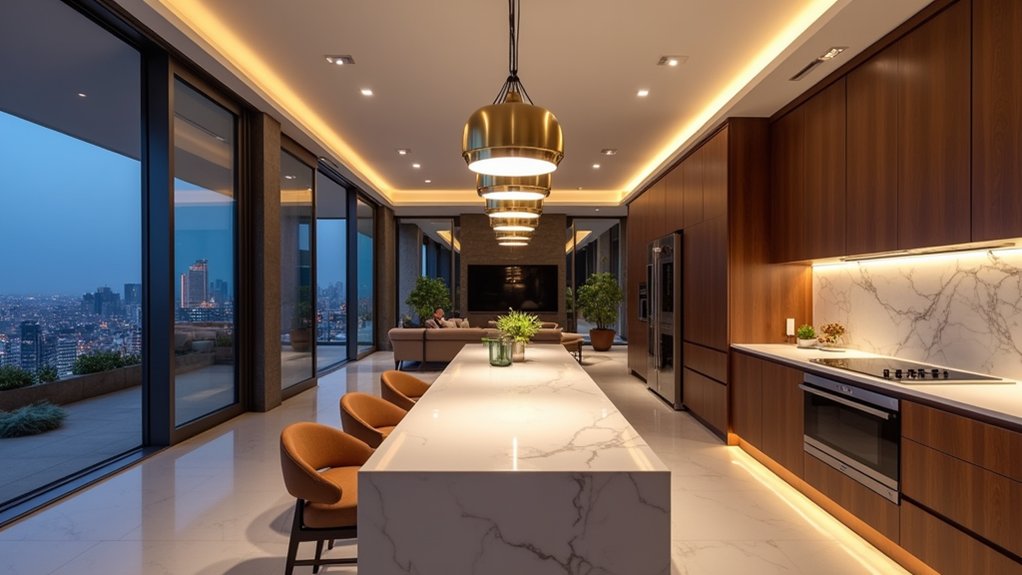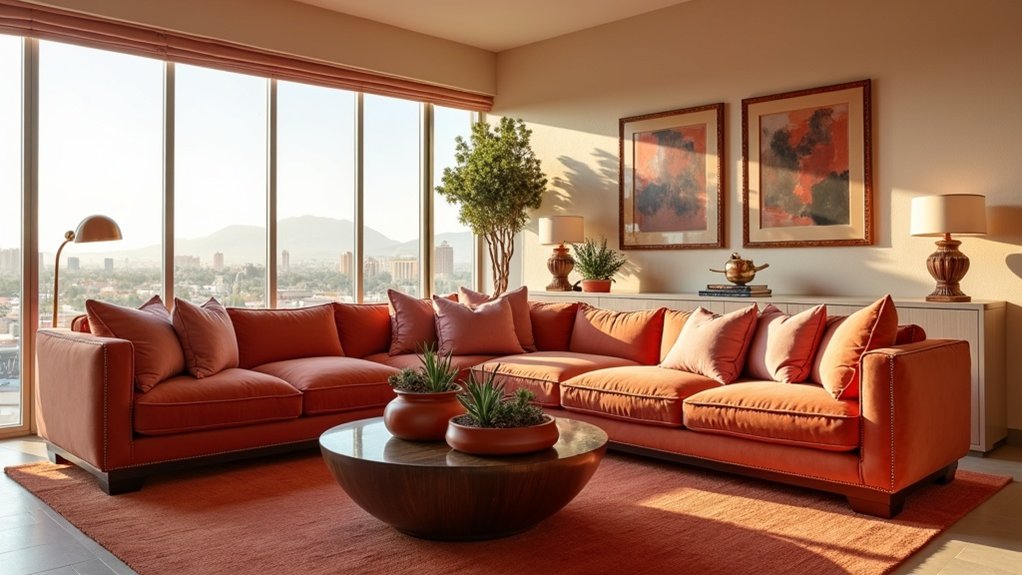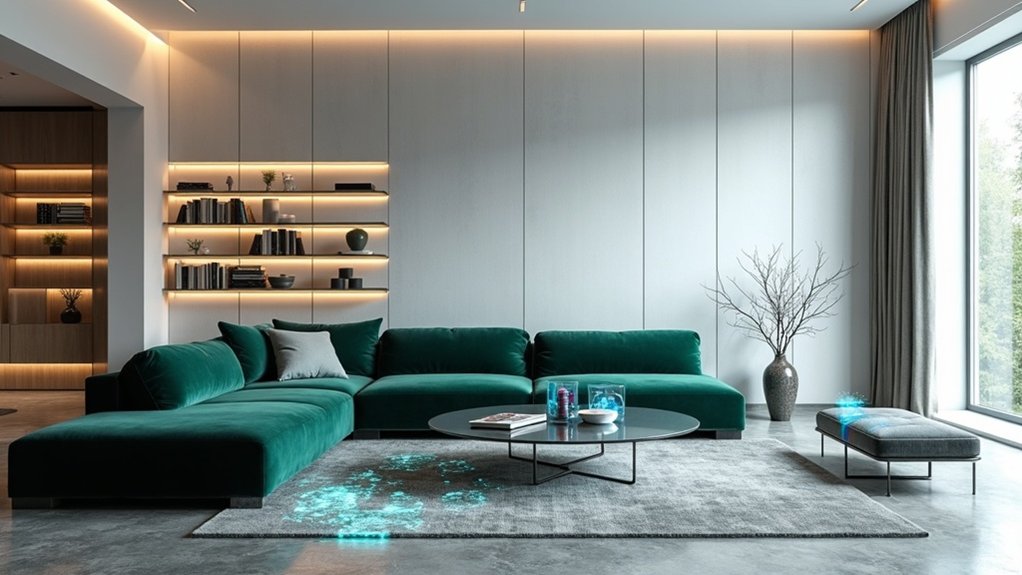As contemporary architecture increasingly emphasizes the interplay between form and function, lighting design has emerged as a vital discipline that shapes both the aesthetic and experiential qualities of built environments. Professional architects understand that masterful illumination extends far beyond simply installing fixtures; it requires a subtle understanding of how light interacts with space, materials, and human perception.
Masterful illumination requires understanding how light interacts with space, materials, and human perception to shape built environments.
The foundation of architectural lighting rests on achieving balance through strategic distribution of light sources. This principle minimizes visual fatigue while creating spatial harmony that improves occupant comfort and performance. Architects employ layering techniques, combining ambient lighting for general illumination with task lighting for specific functions and accent lighting to highlight architectural features. This multi-layered approach produces environments that adapt to varying needs throughout the day while maintaining visual interest. The interplay between shadows and light creates depth and drama that enhances the three-dimensional qualities of architectural spaces. Additionally, incorporating delicate lighting can soften brightness and reduce harsh shadows throughout the room.
Color temperature plays a significant role in establishing atmosphere and supporting human circadian rhythms. Warm light between 2700K and 3000K promotes relaxation in residential and hospitality settings, while cooler temperatures ranging from 3500K to 5000K boost alertness in workspaces. High Color Rendering Index values guarantee accurate color perception, particularly important in retail environments where product appearance directly impacts purchasing decisions.
Advanced techniques like wall washing and grazing reveal architectural textures and create spatial depth. Up-lighting emphasizes verticality and grandeur, while carefully positioned down-lighting provides functional illumination without compromising aesthetic goals. Spotlighting draws attention to artwork or signage, creating visual hierarchy within the space. These techniques enable architects to define activity areas and enhance specific architectural elements through strategic fixture placement.
Modern control systems provide unprecedented flexibility in lighting design. Dimming controls and tunable white technology allow occupants to adjust brightness and color temperature according to activities or time of day. Zone control systems offer localized adjustments, guaranteeing each area receives appropriate illumination while maintaining energy efficiency.
Successful lighting design requires careful planning that considers traffic patterns, functional requirements, and architectural intent. Pathway mapping visualizes movement through space, informing placement decisions that guide occupants intuitively.

